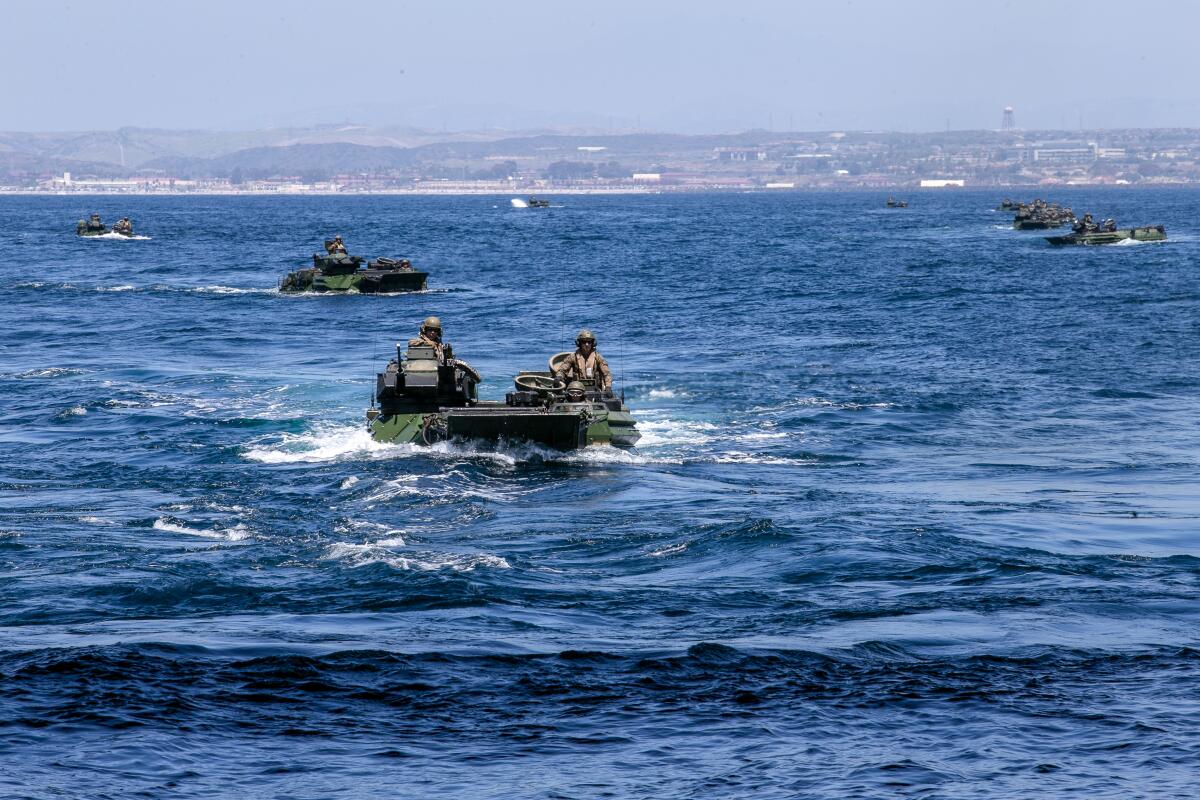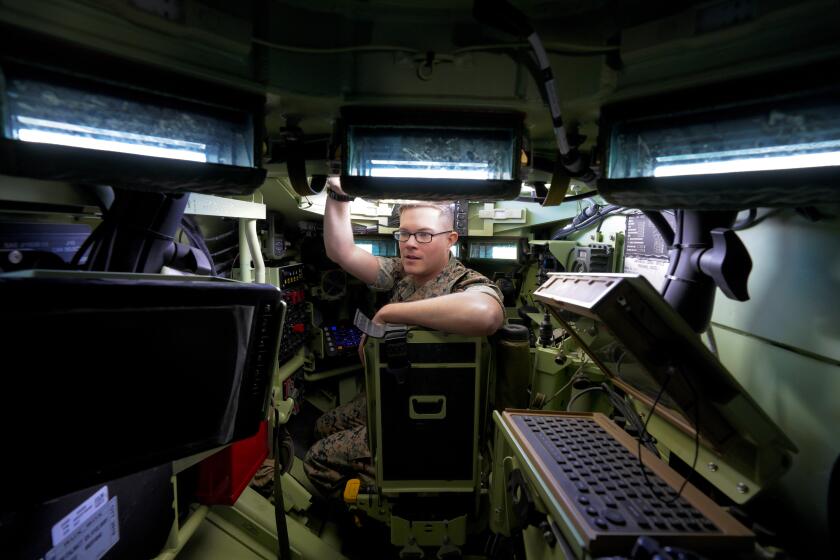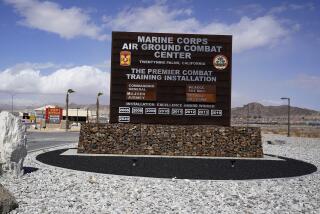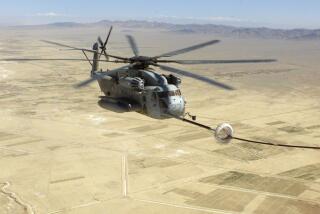Marines pull beleaguered amphibious vehicles from operating in the water

- Share via
SAN DIEGO — Marine assault amphibious vehicles will no longer deploy or train in the water after two investigations into the fatal sinking of one of them near San Diego last year, the Marine Corps announced this week.
The decision to suspend amphibious operations permanently was made despite the belief in the Corps that the Vietnam war-era vehicles are still “safe and effective” in the water, a Marine Corps spokesperson said in a statement. The Corps had temporarily halted waterborne operations in the wake of the sinking but resumed training in the water earlier this year.
“The Marine Corps stands by the efficacy of the recommendations that came from the multiple investigations into the AAV mishap from the summer of 2020, and with those recommendations implemented and sustained, the AAV is a safe and effective vehicle for amphibious operations,” said Maj. Jim Stenger. “That said, given the current state of the amphibious vehicle program (the program that manages both AAVs and ACVs), the commandant of the Marine Corps has decided the AAV will no longer serve as part of regularly scheduled deployments or train in the water during military exercises.”
AAVs will continue land-based operations, and the Corps said it is prepared to reverse its decision if the vehicles are needed for crisis response or if the need arises.
The ACV is a new amphibious combat vehicle that will replace the aging AAV fleet over the next decade. Stenger added that ACVs are also currently suspended from open-ocean operations but will return to the water early next year once an issue with their towing mechanism is resolved.
New amphibious armored troop carriers set to replace Vietnam War-era amphibious assault vehicles
Problems with the Marine Corps’ AAVs were thrust to the forefront in July 2020 when eight Marines and a sailor died when their vehicle broke down just off San Clemente Island as it was returning to the amphibious transport dock Somerset after spending the day training on the island.
Subsequent Marine Corps investigations — one into the sinking of the vehicle and another into the formation of the 15th Marine Expeditionary Unit, or MEU — found that the Marines were given vehicles in poor mechanical condition and that the troops were not properly trained in waterborne evacuation.
The families of the men killed sued BAE Systems, the AAV’s manufacturer, earlier this year. BAE Systems also manufactures the new ACV.
On July 30, 2020, Marines and sailors assigned to the newly-formed 15th MEU, which included personnel and equipment from the 3rd Assault Amphibian Battalion and Battalion Landing Team 1/4, were training on ship-to-shore amphibious operations. That morning, 13 AAVs left the Somerset for San Clemente Island for a half-day of training.
A Marine Corps investigation found the 35-year-old vehicle was in ‘horrible condition’ and its crew not properly trained before embarking, reports say
However, once on the island, several vehicles experienced mechanical issues — including the one that would later sink. Four AAVs stayed behind as the rest began making their way back to the Somerset.
One vehicle’s transmission failed, then its water drive, then its generator. Those on board sat in the dark as water rose inside. The vehicle commander hesitated to order an evacuation and by the time he did, water was chest high, according to the Corps’ investigation.
The Marines later said the vehicle was 35 years old and should have never been in the water that day. In fact, many of the vehicles provided to the MEU from the 3rd Amphibian Battalion had recently been in a non-operational status, investigators found.
In part, the Marines pointed to pandemic restrictions and overstretched troop commitments — including a deployment to the U.S.-Mexico border — as contributing to the training and maintenance lapses ahead of the MEU’s formation.
Two investigations released Wednesday — one from the Navy, the other from the Marines — show services unprepared for amphibious operations
The suspension of waterborne operations and deployments for the AAV come at a time the Marine Corps is restructuring its composition away from what was needed for the desert land wars of the last two decades toward one that’s prepared to operate in the Indo-Pacific region.
In the wake of the sinking, the Marine Corps punished three commanders, including the former commanding general of the 1st Marine Division, Maj. Gen. Robert Castellvi; the commanding officer of the 15th MEU, Col. Christopher Bronzi; and the commanding officer of BLT 1/4, Lt. Col. Michael Regner.
Three Navy officers also received administrative punishments, including the commander of the Navy’s amphibious task force, the captain of the Somerset and the ship’s tactical action officer.
Yet another Marine commander, Lt. Col. Keith Brenize, is facing a board of inquiry at the Marine Corps Headquarters in Quantico, Va., where a panel of officers will determine whether he also shares responsibility for the sinking.
More to Read
Sign up for Essential California
The most important California stories and recommendations in your inbox every morning.
You may occasionally receive promotional content from the Los Angeles Times.













